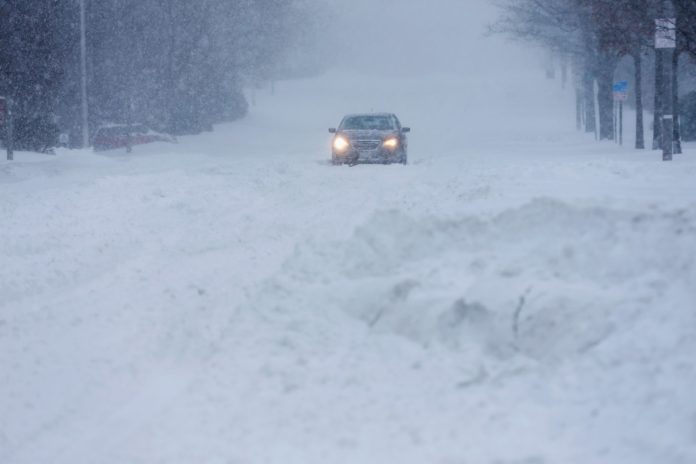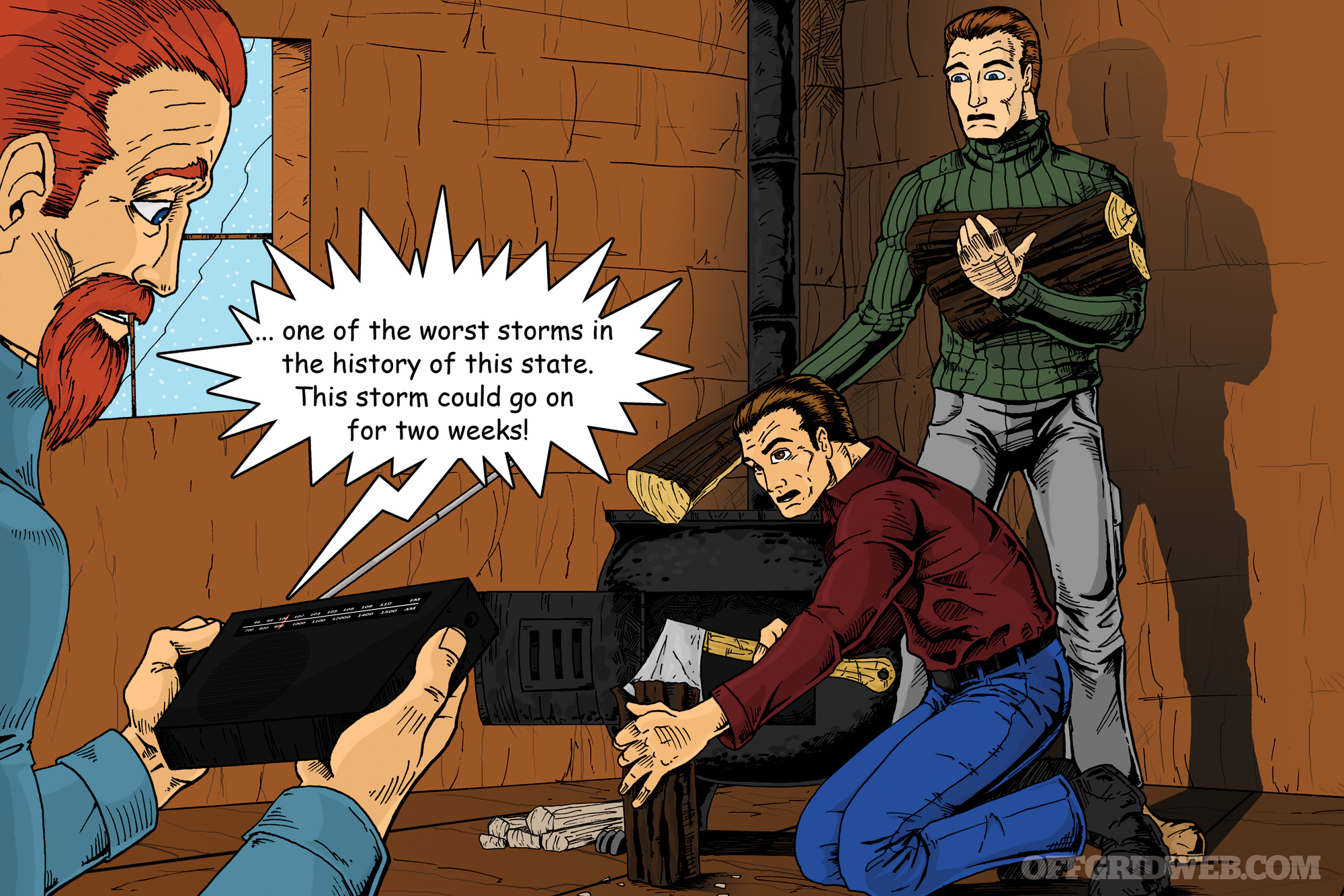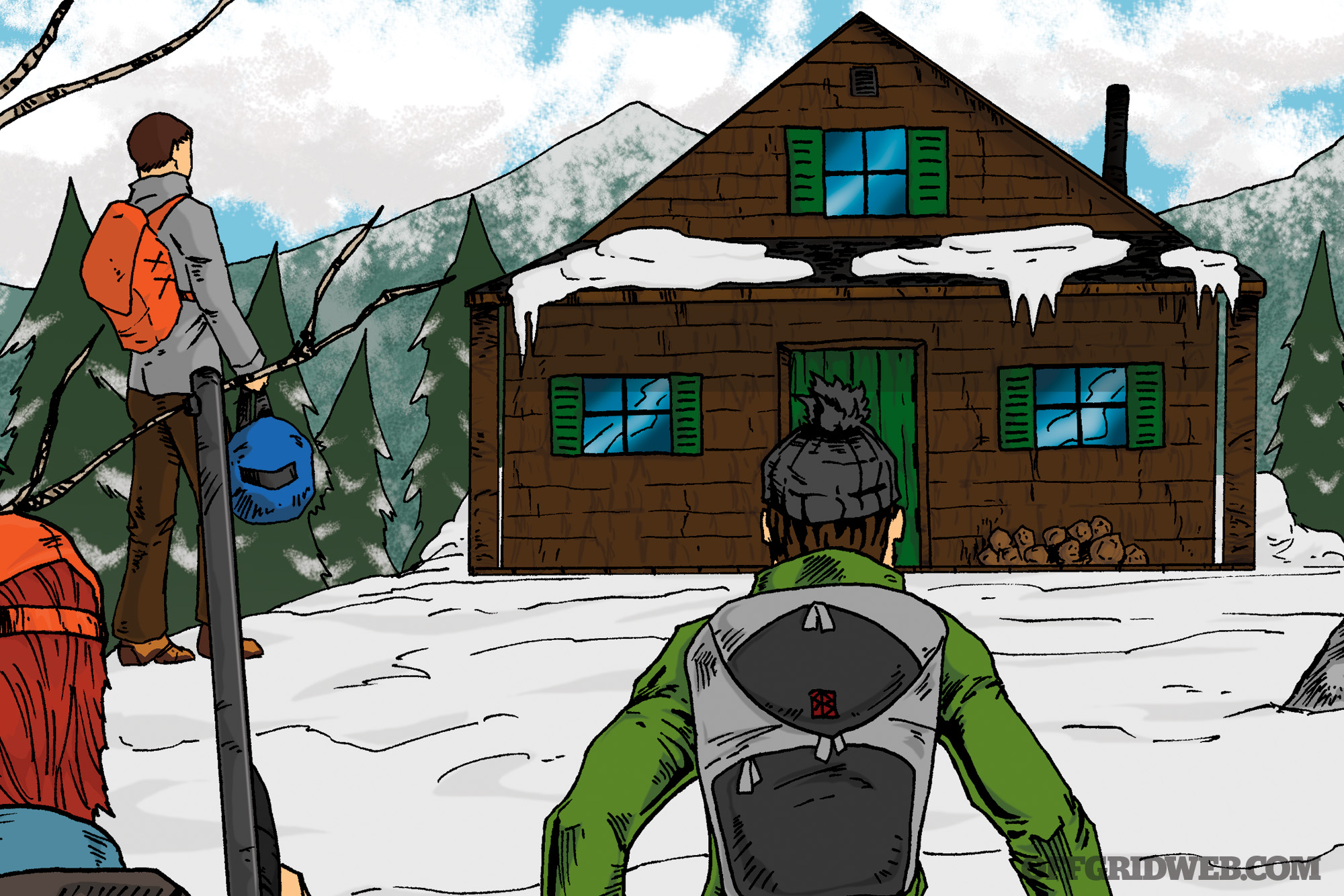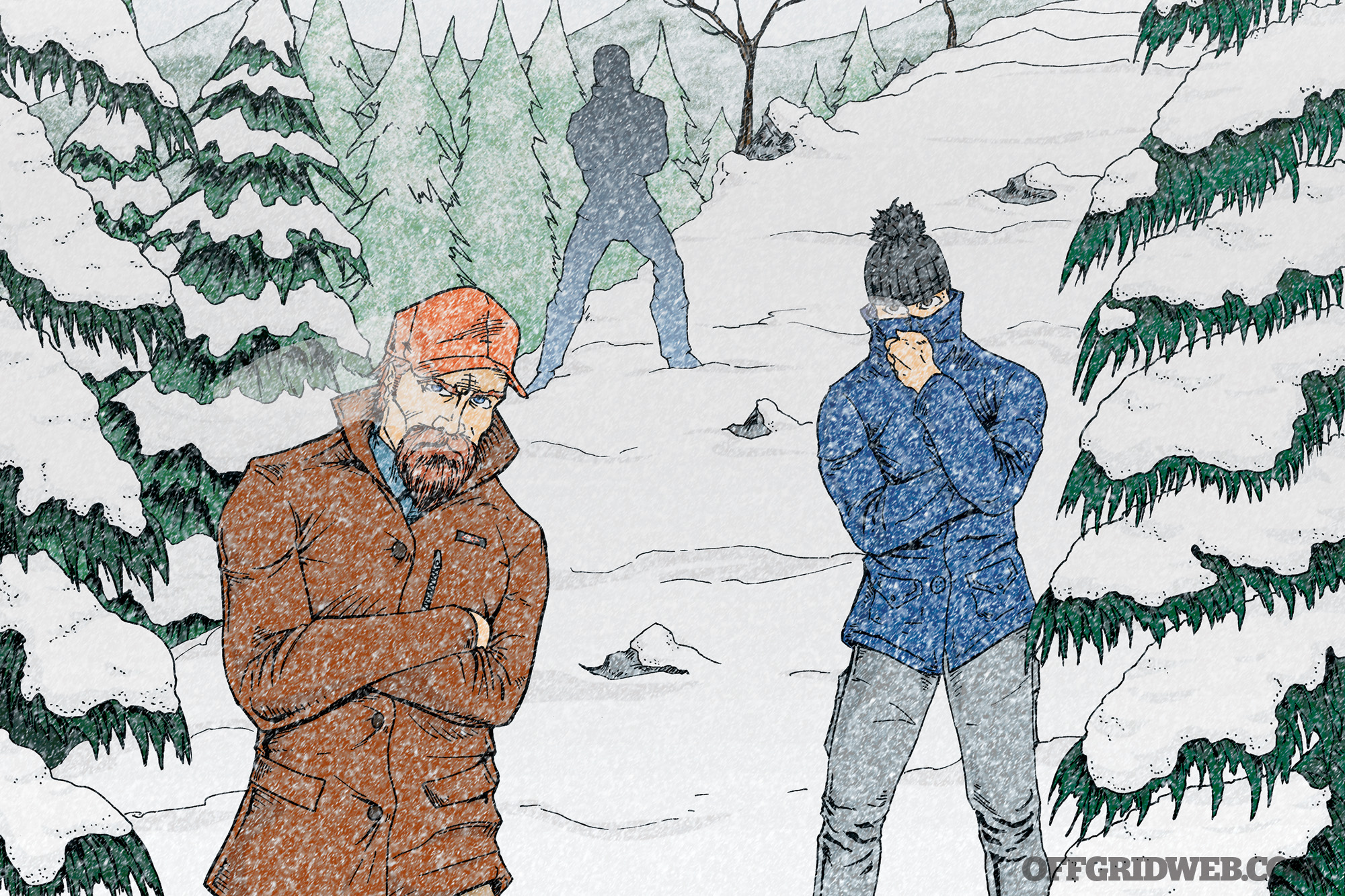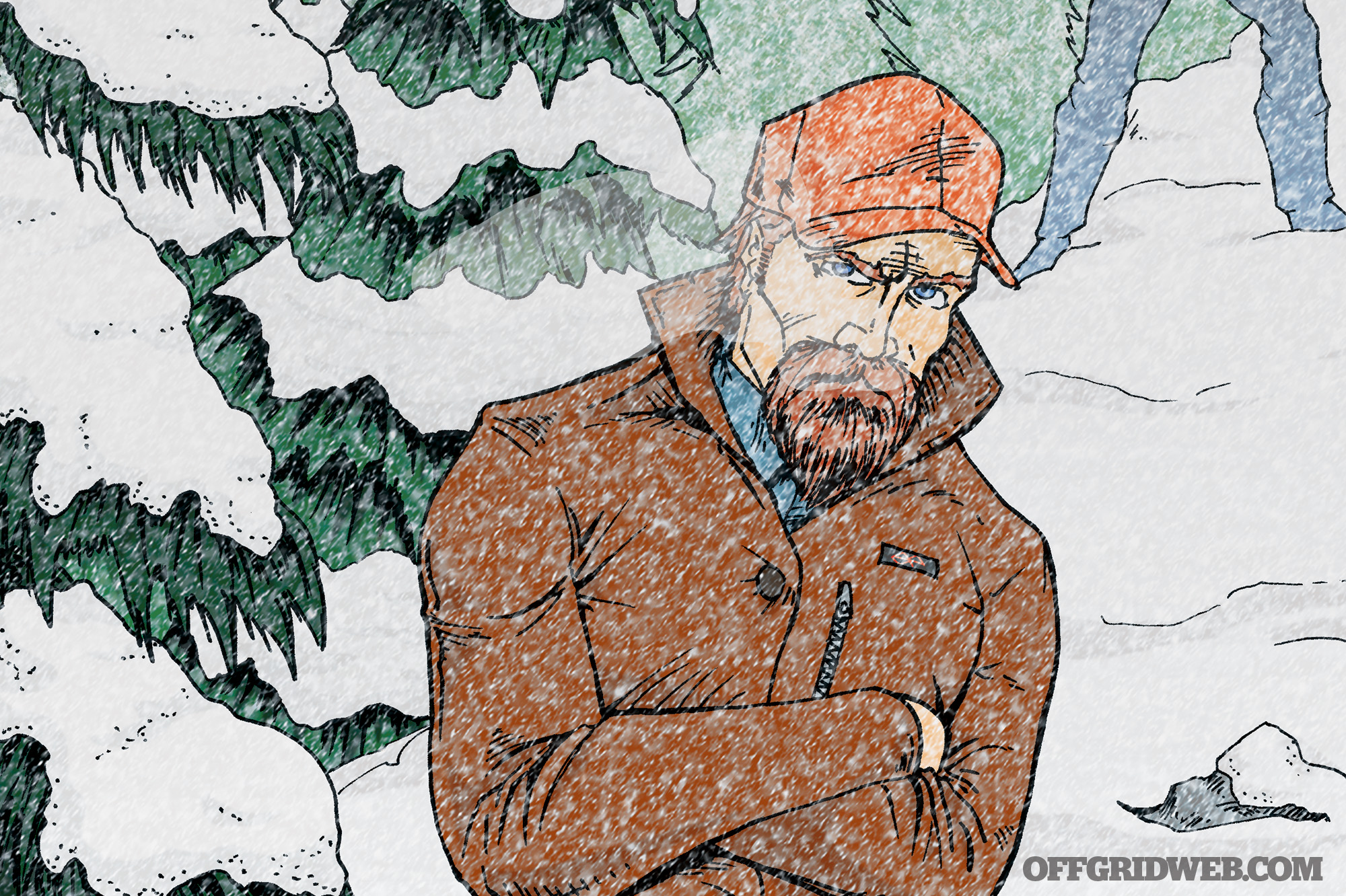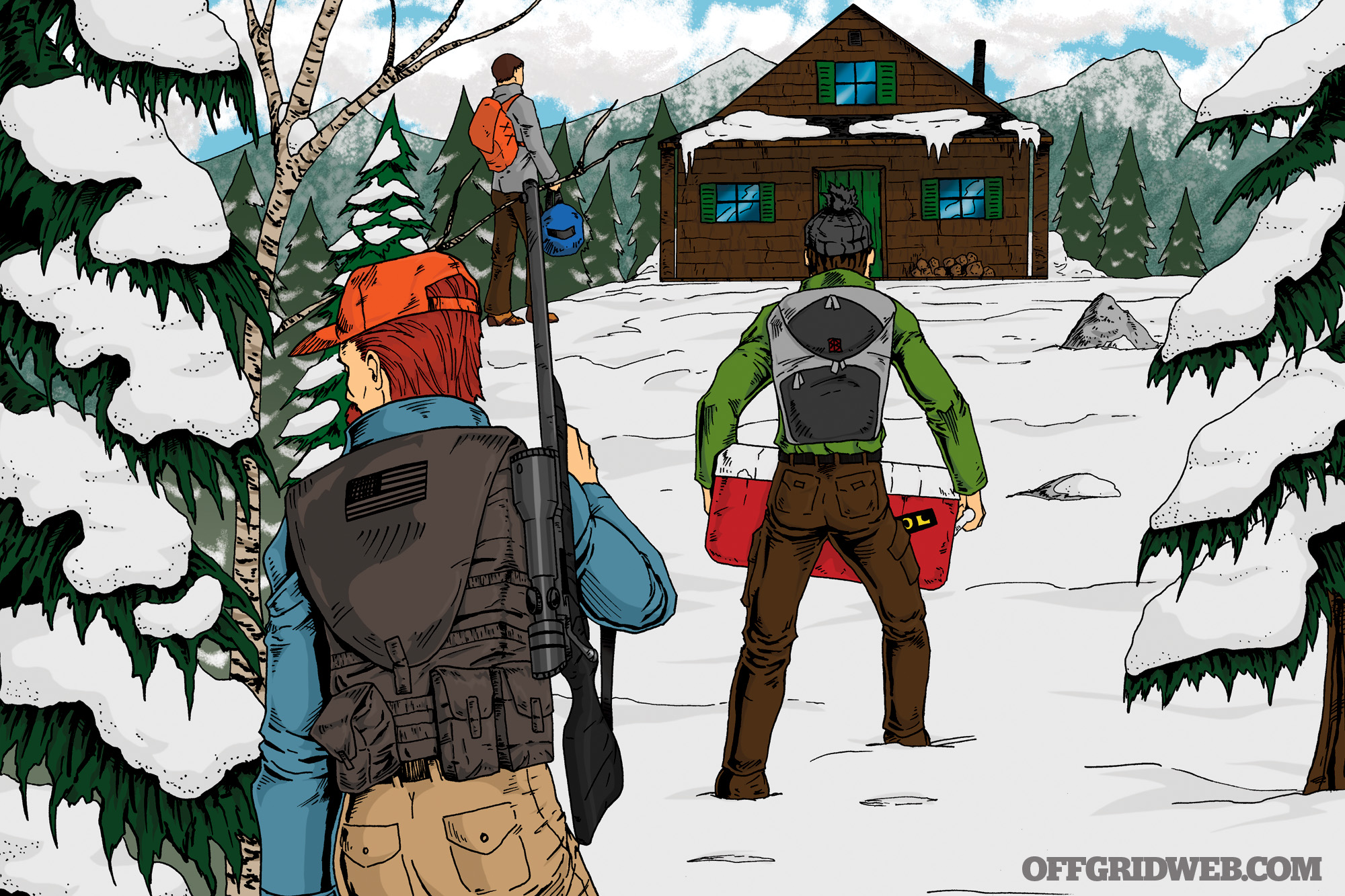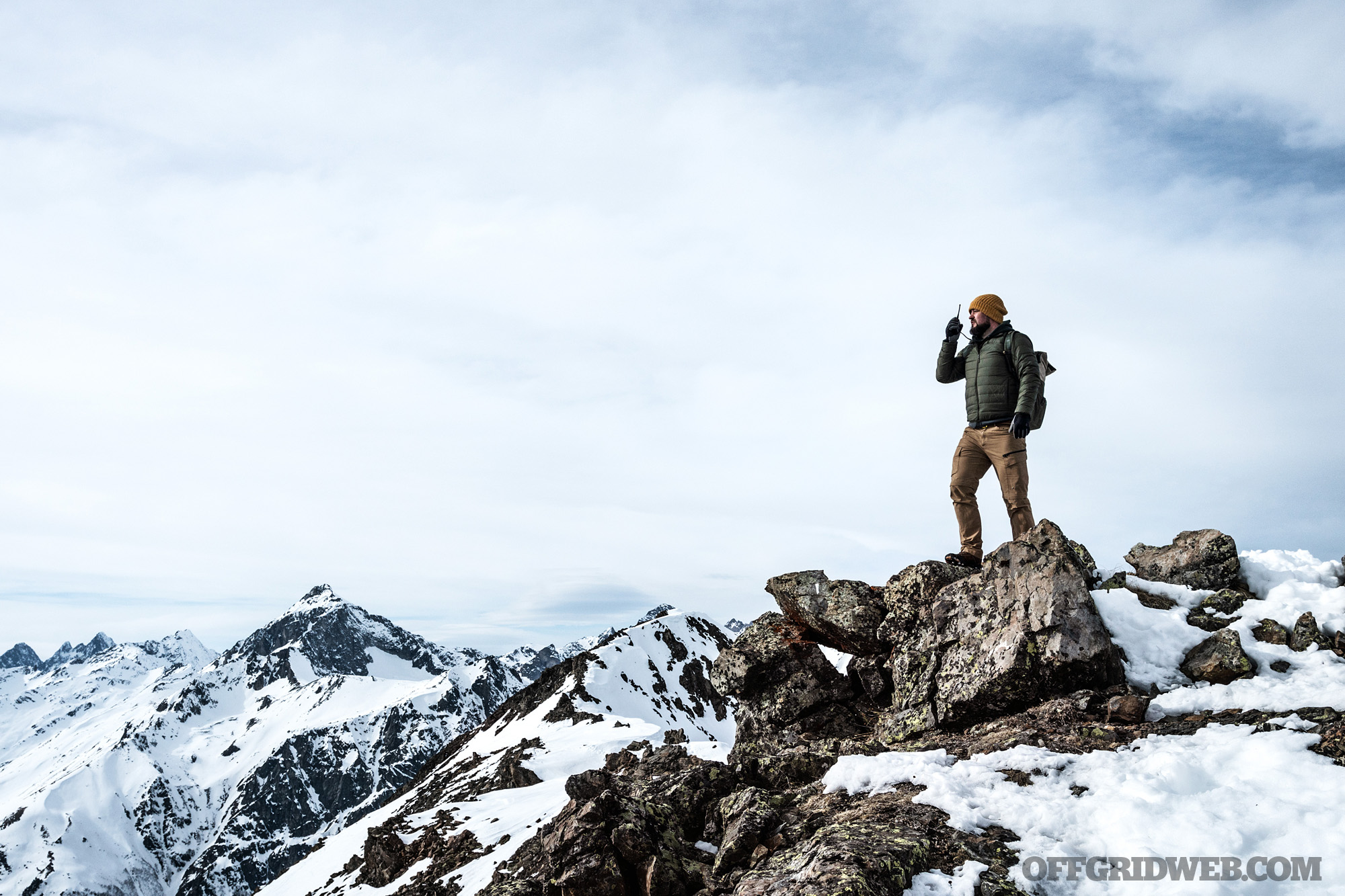Early in 2021, Texas faced record-low temperatures that caused millions to be without power. Think about that for a second. Even in one of the most industrialized nations in the world, Mother Nature dealt a huge (and freezing) blow to commerce and living conditions. As human beings, we’ve become dangerously over-reliant on our climate-controlled life and amenities. Although this winter storm was a freak occurrence, there’s no doubt that its estimated death toll of 230 could’ve been reduced by better preparation.
Now, imagine yourself stuck in an area with frigid conditions where you must forgo many of the resources you might’ve stockpiled at home. Whether you live in a locale that could potentially be affected by severe cold during the winter months or you just happen to be vacationing somewhere remote, do you know what it’d take to survive if immediate help from first responders is nowhere in sight and utilities are disabled? How can you use the resources at your disposal to survive plummeting temperatures?
The Blizzard Scenario
Situation type
Blizzard/power outage
Your Crew
You and two friends
Location
Chandalar Lake, Alaska
Season
Winter
Weather
Snowy/windy; high 4 degrees F, low -10 degrees F
The Setup
Illustrations by Robert Bruner
You and two friends have been planning an Alaskan hunting trip for several months. You rent a remote hunting lodge in a rural area near Chandalar Lake that’s only accessible on foot. Although it’s wintertime and you knew the weather would already be brutal, the forecast is anticipating a blizzard. Since it’s too late to cancel and get a refund, you decide to roll the dice and make the best of it, hoping the weather will turn around and become more favorable.
After arriving at the airport, you and your friends rent an SUV, stop to buy some food and other provisions, and venture down a long dirt road to a designated parking area before heading out on foot to the lodge. The path up to the parking area is a windy uphill track, which would make getting back down nearly impossible in heavy snow, and you have no idea if the road below is regularly cleared or not. It’s inconvenient, but you have to make several trips back to the car in order to carry all your supplies to the lodge. However, you’re confident your experience will be a positive one and you have enough food and water to hold you over for the few days you’ll be there.
The Complication
You bring a small battery-operated radio to get updates on weather since cell service in this area is practically non-existent. Daylight is also compromised by the fact that sunrise in this part of Alaska typically happens around 11 a.m., with sunset occurring around 2:30 p.m. You settle in for the night with winds picking up and heavy snowfall, hoping that the weather will pass you by. You rise early to trek out to the hunting blinds and wait, but the snowfall is practically at window level now. You and a few friends have to force the door open to push the snowpack back far enough to even get a leg through the door. In other words, your situation is getting grim, and you decide not to risk getting caught in the continuing blizzard by going out to hunt.
The radio is saying the blizzard is one of the worst in the state’s history, and it’s anticipated to go on for two weeks. Then, the unexpected begins happening. Power at the lodge goes out. The gas system soon freezes over, as does the water, meaning you have nothing to drink except what you brought. There’s no heat in the lodge except for an old potbelly stove that you’ll have to go procure wood for. The food and water you brought isn’t going to last a couple weeks. What do you do? Try to get back to the car, which may be compromised by an impassable road? Attempt to walk until you find help or cell service? Try and wait it out? What’s the best course of action for this situation? We asked cold-weather survival expert Jerry Saunders and forester Patrick Diedrich for their takes on the situation.
Forester Patrick Diedrich’s Approach
Thinking about spending a multi-day trip in an environment as majestic and foreboding as Alaska can be an exhilarating — and perhaps intimidating — proposition. Living in the relative comfort of the lower 48 means that I have access to just about anything I could want, including close proximity to developed communities and their emergency services. As I plan for a hunting trip to one of the most remote locations in North America, knowing in advance that a severe blizzard is on the way, I use one word to guide my planning process: redundancy.
Hunting in freezing temperatures can be tricky in the best of circumstances, and I want to be confident that my friends and I will have an enjoyable trip, regardless of a massive snowstorm on the way. When I come back home, I want to stock my freezer full of freshly harvested game, not to nurse frostbite. I start thinking about the most likely scenarios my friends and I will find ourselves in the middle of and work from there. Out of everything that could possibly happen, at a minimum we’ll need several strategies to stay warm, hydrated, and consume enough calories to maintain a healthy metabolism in cold conditions.
Pre-trip planning also includes doing a little research on the behavior of the plants and animals in the region, doing some map reconnaissance and identifying nearby towns or useful natural resources. One of the most important things anyone can do before heading out into the wilderness — whether it’s for a few hours or a few days — is to let someone know where you’ll be and how long you plan to be there. Before I find myself in a place with no cell reception, I let friends and family know what’s going on. Since we’re going to an isolated lodge in central Alaska, it may also be a wise decision to reach out to local emergency services, and just let them know where we’ll be staying. If they don’t hear from us after an extended inclement weather event, they’ll know to at least check on us after things have calmed down.
Backcountry Living
After disembarking from the plane in Alaska, the first thing I do is ensure I leave the airport with a 4WD vehicle. The higher the ground clearance the better, in case the snow starts to accumulate on the road on our way there. My own vehicle would have a strong tow strap and some emergency gear, and I’d try to acquire this for the rental. If these items are unavailable, other than giving the vehicle a careful inspection and filling it with a full tank of gas, I’ll just have to drive more slowly and be extra cautious while heading to the lodge.
Since it seems like hunting for dinner may not be an option, I’m going to need extra provisions. On the way to the lodge, we stop at the nearest store and load up. High winds and blowing snow almost always result in trees over power lines. No power can render any steps to keep water flowing or heat radiating completely useless. Sure, there’s plenty of wood to burn in the surrounding forests, but acquiring firewood is physically intensive. Pair that with working in the cold, and the average adult could potentially burn thousands more calories than they would under normal conditions. This means preparing extra calories, ideally foods high in fat, protein, and sugars. We buy as many extra nuts, canned meats, and snacks like granola or peanut butter as we can reasonably bring with us.
Calories accounted for, we double-check to make sure we have packed everything we’d normally bring on a camping trip, plus a few specialty items for hunting in the snow — sleeping bags rated for freezing temperatures, tarps, and wool blankets to stay warm. Items made of modern wool are a great way to reduce the amount of gear I need to bring and avoid having items out of commission if they get soggy. Redundancy as my mantra, I make sure to pack enough so if anything important gets wet or broken, I have some kind of contingency. Tools for starting a fire, such as lighters and matches are a no-brainer, but having a few extra is better than running out when you need it most. For preparing firewood, we need an ax and a crosscut or bowsaw. Chainsaws are a nice luxury, but they also require fuel, sharpening, and firm footing on the ground — all of which may be unavailable, and too cumbersome to stock up on. Snowshoes and a sled for easily moving a carcass or firewood will also make life much easier.
After triple-checking our supplies and arriving at the parking location, we quickly begin moving our supplies from the vehicle to the lodge. Two of us will make any necessary trips to get all the gear and food up to the lodge, while the third begins looking for more firewood and kindling. Restocking a healthy supply of firewood before leaving a lodge or campsite is considered the pinnacle of proper backcountry etiquette. But, even if we find a good stash of dry wood when we get to the lodge, it’d be prudent to collect as much as we can before the snow starts to really starts to fly in earnest. In this region, it’ll most likely be paper birch or sitka spruce that burns with the highest amount of BTUs, and as an additional bonus, the resinous bark of paper birch will light on fire wet or dry. Upon completion of the move-in, we hunker down for the night with flashlights and the emergency radio on standby.
Staying Toasty
Knowing in advance that a winter storm is moving in, waking up to rapidly accumulating snowfall isn’t alarming. But losing power and heat changes this outing from a hunting event to a survival situation. Using the final moments of the propane heat to get organized and come up with a plan is critical.
Getting everyone into the same room as the potbellied stove, we systematically seal all drafts with wadded paper, duct tape, or whatever we can find. We’d also need to ensure that the flue on the stove is open, and that the chimney is free of any obstructions or perforations to avoid succumbing to carbon monoxide poisoning. Everyone stacks as much firewood as we can find close enough to the stove that the radiant heat will help dry out any moisture. We then summon our inner children to build a multi-layered living room tent out of some of the tarps and blankets we brought. This is going to be an A-frame-style shelter with the back sealed to the floor and the opening facing the stove. Doing this creates an insulating effect between us and the interior walls, reducing the amount of fire we need to burn to stay reasonably warm.
One of us will always be on fire duty, watching the potbellied stove to ensure the fire is burning continuously. The designated fire attendant will also monitor our emergency radio for any important messages relayed by the National Weather Service. The remaining two people can either catch some shut eye or use any breaks in the weather to go in search of more firewood and food.
If we leave to gather more supplies, we must be careful not to allow too much warm air to escape. Much like an airlock on a spaceship, instead of leaving directly from the stove room, we use an adjacent room to venture outdoors. This may mean having to use a window closer to the ceiling if the snow is too high, or tunneling our way up using the outside wall of the lodge as a guide. Some buildings this far north even have what are called “doors to nowhere” exclusively for this purpose.
If the weather persists much longer than our supply of wood is lasting, we could use the axe and saw to start breaking down any wooden furniture or cabinets to keep the fire from dying. The worst-case scenario would be having to cannibalize the wooden structure of the lodge to a point that using any more material would expose the warm room to the outside. This could be avoided with thorough initial preps and a watchful eye on weather conditions.
Hunting in the Snow
Maybe the storm will not be as terrible as predicted, and we’ll get to do what we came for. Waiting comfortably in one place in the cold is an art that’s not as easy as it sounds. Wearing multiple layers that I can vent while moving from lodge to blind, and vice versa, will avoid excessive sweat accumulation.
Bringing a day pack will allow room for additional gear or give me a place to store layers to prevent overheating. Additional items to avoid cold injuries and ensure a successful hunt would be a face mask and ski-goggles, hand and boot warmers, trail mix, a thermos, binos, and an emergency fire-starting kit. Hunting this deep into the backcountry means I will most likely not have to stray too far from the lodge to yield results, and I don’t feel like having a satellite phone or some other expensive GPS communication is absolutely necessary. But a reliable compass and a roll of neon flagging will help me get to and from the blind without getting disoriented. If visibility worsens and white-out conditions seem like a possibility, I’ll retrace my path and head back immediately.
Nourishment
Having three square meals a day isn’t as concerning as staying hydrated. Even if we’re unable to hunt, and we run out of our provisions, we’ll survive for several weeks if we stay warm and have access to sterile drinking water. A silver lining to this scenario is that we have frozen water in abundance all around us. By keeping that potbellied stove fired up, we can continuously melt snow and boil it to kill any harmful biological contaminants. If there’s access to certain evergreen trees, there may even be needles and scales to make tea rich in vitamin C. Our initial preps should help us avoid any serious hunger concerns, but to be safe, we’ll ration food by dividing it into as many days as the blizzard is forecasted to last. Eating before trying to go outside to hunt or gather wood may give us just enough energy to perform these tasks without becoming overly fatigued.
Fighting Panic
Keeping spirits high is just as important as warding off the cold and staying hydrated. Having a positive mental attitude has been scientifically proven to help people heal from injuries faster and avoid getting sick. Many of us are not used to the prolonged absence of sensory stimulation, so being isolated in silence can be unnerving. Staying focused on the duties that need to be done instead of dwelling on the dire circumstances is one way to avoid anxiety. Another way could be to come up with games or find something to keep our minds and hands busy, such as working on ways to improve our living situation.
Cold-Weather Survival Instructor Jerry Saunders’ Approach
Rolling the dice on a possible two-week blizzard in Chandalar, Alaska, would be a very calculated decision. I wouldn’t even consider attempting a gamble like this unless the plus two that I am bringing are seasoned veterans of the cold as well. If I’m going on a sketchy backcountry adventure, I want several trusted people to know where I am and do as much as they can to get me out, but only if they can do so without compromising their own safety.
In 1991, a Canadian C-130 Hercules crashed just 12 miles from the base it was tasked with resupplying. Due to a severe blizzard, it took the Canadian military over 30 hours to get to the crash site. Many people died due to exposure (-60 degrees F) and many more people willingly put their lives at risk to save them. Being stuck in a cabin for two weeks is an inconvenience — don’t turn it into a survival situation for everyone.
PREPARATION
Comms Plan: If I know a blizzard is coming and there’s a possibility of my 72-hour hunting trip turning into a future survival documentary, I’m going to call the lodge owner prior to departing the lower 48 and ask about contingencies and available resources in the area. I’m going to leave my detailed itinerary with my emergency contact and give them explicit instructions to “notify everyone” if I don’t call within 24 hours of my planned re-contact time. I may not be in immediate danger, but it’s nice to be a blip on more radars than less.
Bring the Right Gear: One of the best pieces of gear you can take with you to an extreme cold-weather environment is a ticket for an extra checked bag. It doesn’t matter what I’m already carrying. I use an old G.I. sea bag because it’s long enough to hold my larger items and robust enough to keep gear from tearing through. Snowshoes, ax, Silky Big Boy saw, avalanche shovel, large cold-weather boots, and most of my heavy weight down items travel there to pad it. Spend the time beforehand acquiring the proper sizes and clothing for the environment. I’d avoid a travel plan solely based on attempting to rent or purchase these items upon arrival. Remote locations are notorious for having unreliable supply chains and making wrong sizes “work.”
Map Study: Print hard copies. Then laminate these hard copies. Everyone gets one, and everyone is clear on basic routes to key items, such as the nearest airport or best medevac route. Even on a sunny day, this is an important lifesaving precaution. Technology is great, but the cold has a nasty habit of draining batteries and with the forecasted blizzard, having low to no reception should come as no surprise.
I like to use www.caltopo.com to print my maps. I can add and remove layers as I see fit, and it has tools to measure distance and mark my route. For a trip with this much risk involved, I definitely want to have magnetic azimuths and distances from the lodge to the hunting blinds and any location that may aid my exit strategy, such as the parking area and the airstrip.
Along with map and compass, I carry a Garmin InReach. This acts as nav and part of my comm plan also, but I don’t heavily rely on it.
Dress for Failure: “Tighty whities” have no place in the tundra. I say that because it’s funny and it catches your attention, but the infamous tight, white, cotton undergarment is a perfect example of what not to wear. The old adage “cotton kills” is meant to be a stern warning, but not always true. Cotton isn’t recommended as an undergarment because it’s absorbent and holds the sweat next to your body. Having that moisture in contact with your skin is what robs your body of heat. However, wool and many other synthetics do not absorb the moisture like cotton, but transport it from inside of the clothing to the outside and allow it to evaporate away using your body’s natural radiation. That’s called “wicking.”
Avoid tight-fitting clothing as it can constrict your blood flow. If you’re not walking, loosen your boots and when you’re on the move, don’t over-tighten them.
Dress in layers. The base layer is next to your skin and consists of undergarments if you so choose, and a lightweight wool shirt/pant combo. The mid-weight layer goes over the base layer and usually consists of a quarter-zip fleece and fleece pant combo. On top of that goes the heavy down layer. I have many pieces of down for different levels of warmth, but for blind hunting below zero, I want the heaviest stuff I have. Finally, the environmental layer consists of materials meant to be impervious to rain, wind, and snow, but it should still have zipper vents for when I’m on the move.
Only bring wool socks. Don’t skimp here. Wear only one pair unless you buy the next size up. Two pairs in the same size will be too constricting.
A la Carte: Two items I carry in my hunting pack for emergencies are a MSR Windburner personal camp stove and two freeze-dried meals. These are typically compressed as small as possible and wrapped in duct tape for the best storage.
Going into an extreme cold-weather environment, I know that my calorie intake will need to increase from the recommended 2,000 calories a day to somewhere closer to 9,000 calories a day. While on a ski trip into the Arctic, I was eating a pound of butter and six chocolate bars a day, on top of the three meals I was eating already, and I was still losing weight. So, buy lots of butter, chocolate, and bacon.
A practice I put in place a long time ago when travelling to remote northern villages is that when doing my planned stop at a grocery store for supplies, on top of everything else I buy, I always make sure to pick up one of those 12-pack boxes of ramen. If I can, I buy the spicy ones — they warm you up faster. For around $6, you can have 12 extra meals, supplement current meals, or just have something to leave behind for the next guy.
Buddy Check: Verify that you have redundancies within your group. Make sure up to the departure date that you’re talking and asking each other the tough questions. Did you leave a solid contact plan? Do you have the meds you need? And make sure to know who has allergies to what.
CRISIS
Horse and Rider Concept: Imagine for a minute that your brain is a horse. Horses are more quick and powerful than you and I will ever be, but also highly emotional. If you’ve ever seen an out-of-control horse, you know that’s a problem. Now also imagine a small but very rational rider, controlling the horse and not allowing it to run wild. You need to be that rider at this moment.
Priorities of work become very defined at this point. You need to dig out, ensure proper ventilation, stay dry, warm, and fed. You have all that you need at the cabin. At this point, attempting an exit strategy could serve to only further compound the problem.
W.I.N. (What’s Important Now?): With utilities out, I’d immediately transition to the woodstove. Dig yourself out of the front door, or if you have to, go out a second story or loft window if available. With bad visibility, I’m going to tether myself to a secure part of the house using paracord or some other secure makeshift leash. If there’s a woodstove, there may be a woodpile lying around. This is one of the key things I look for when taking initial inventory at a rental cabin.
IBT (Individual Based Tactics): While I’m working outside, the other two of my group can be inside improving and insulating a new place to sleep. Close what doors you can and hang a covering over open doorways to act as an airlock. I’ve even used my SOL two-person survival blanket and sewing needles from my survival kit to accomplish this task.
THE LAST FRONTIER
If you’ve never worked with a wood stove, here’s a crash course of everything I’ve learned in the last six years of heating my cabin with only wood.
Cold air is heavy. Start with a relatively clean stove. Make sure all the ports are open — you want it to draw as much oxygen as possible. The initial moments of your fire need to be really intense in order to push the cold air up and out. If it’s only snow blocking the stove pipe, it will burn up and through it, but if it’s ice, you’re going to have to clear it.
Burn it wide open. It might be tempting to try and dampen the fire to make it last longer, but this makes it more prone to smoke and increases the risk of a chimney fire. Who knows when it was cleaned last? Play it safe and burn it to completion. If your room is small, you won’t need to keep it going non-stop.
Clean but not too clean. Ash is insulative. You’ll need to clean out the stove at some point. Clean out enough to allow sufficient space for the burn, but leave about an inch of ash on the bottom of the stove. Toss the ash outside to help give you traction on the ice and snow.
Gather wood. You need a sled. It’s a staple of any northern hunting lodge. You don’t really use backpacks in over-the-snow travel, you use a sled to disperse the weight onto the snow behind you. If you can’t find one, make it. It’ll take about a full-size tree a day. Birch will be your most easily identified tree here. You’ll know it by its white bark that peels off like paper. Save the bark because this is some bulletproof tinder. This is why I never travel without my ax and a good saw like the Silky Big Boy. With this saw/ax combo, it takes me roughly two hours to process a tree to ready to burn firewood.
Create a routine. Take turns getting wood, splitting wood, and cleaning the stove. Chores such as this can become a choke point and create discord in the group.
UTILITIES
With the power out, there’s no electricity for the well to draw water. Grab a pot from the kitchen, and pour what water you have in it. “It takes water to make water.” By just throwing snow in a pot, you can impart a seriously burnt taste on your water. If it’s a large enough pot, it’ll just lightly steam all day and put back the moisture in the air that the woodstove will take out.
Be aware that propane is an odorless gas, but has an added chemical called mercaptan. Mercaptan gives it the offensive “rotten egg” smell. If you smell this at any time, you must get out and ventilate immediately. As far as troubleshooting the gas system, here’s what I know: Start at the tank, lift the protective cap on the tank, and check the gauge first, so you know if you even have gas. Then, follow the copper line to a regulator — it looks roughly the size of a hamburger and will usually be brown or white. While propane doesn’t freeze until it reaches around -44 degrees F, sometimes the regulators can stick or become frozen. If it appears frosted, you may be able to wrap a few of the disposable handwarmers around it and wrap it with a towel to gently rewarm and insulate it. Don’t forget to explore the property. You might find other heating options, such as a propane grill outside, or a Mr. Buddy Heater stored with ice fishing stuff.
DON’T FORGET THE OWNER’S CLOSET
Most of the rental properties that I’ve frequented up north, and I know the ones I take care of for people, all have an “owner’s closet.” This is a survival situation treasure trove. It’s usually stocked with family photos, the water heater, the owner’s personal tools, booze, and an emergency cache. Accessing it only requires the SERE Pick Bogota picks that I keep in my Wazoo Cache belt. In the worst case, a mechanical breach and an apology check would probably suffice.
This is a serious inconvenience, a true survival situation, and a sh*tty day all rolled into one. Given recent events in Texas, an extreme cold-weather event isn’t just isolated to the far north anymore. Have a plan for your home, make an emergency cache and maintain it. Be prepared and be responsible for your own life. No plan survives first contact, but with enough preparation and training, you’ll see the sun on the other side.
While some may entertain the idea of having to trap mice or rodents inside the lodge for food, please consider that many owners utilize rat poison in their rodent control plan. Many of these poisons such as Bromadiolone are very potent and have the ability to cause “secondary poisoning.” Such poison is an anticoagulant and can cause you to bleed out internally.
Conclusion
Climate control, GPS, and modern plumbing are things most of us will always take for granted until they’re taken away. But these are relatively new technologies when compared to the entire span of humanity’s existence. Something to always think about when considering a survival situation is that, if humans couldn’t live without these amenities, our species would’ve perished long ago. No matter how deep the snow, how frigid the temperature, or how seemingly insurmountable the odds, we can persist if we attack the situation with unrelenting determination.
These tips and techniques are, of course, applicable to any urban environment that may also be suffering a cold spell. When people are freezing to death in a major metropolis, it should be glaringly obvious that everyone needs to understand how to protect themselves from being deprived of daily conveniences and utilities. Taking winter survival courses from accredited instructors and stocking up on the aforementioned clothing and supplies can go a long way in an emergency.
First appeared first on RECOIL OFFGRID.


